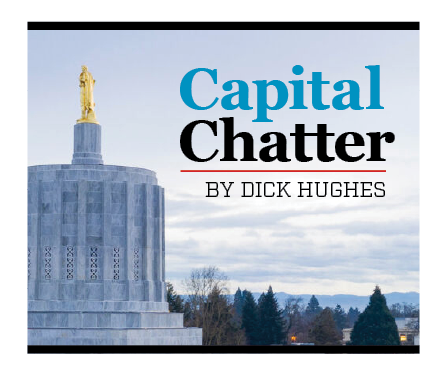Capital Chatter: Vote like your secretary of state choice depended on it (it does)
Published 4:00 pm Thursday, May 16, 2024

- capital chatter logo
Shemia Fagan showed Oregonians why next week’s primary election is crucial, despite voters’ lackluster participation so far.
Trending
Four years ago, Fagan barely beat fellow state Sen. Mark Hass in the Democratic primary for secretary of state. Remember that the elected secretary of state is next in line to become governor if that office is vacated. That happened when Secretary of State Kate Brown replaced Gov. John Kitzhaber in 2015 after he resigned.
Fagan’s victory margin in the 2020 primary was 4,452 votes out of more than 578,000 cast. (Jamie McLeod-Skinner, who is running for Congress again in Tuesday’s primary, placed a distant third.) If Hass had prevailed, he presumably would have won election that fall against the Republican candidate, state Sen. Kim Thatcher, who did not have a strong campaign.
Instead, Oregonians were stuck with Secretary of State Fagan, who last May ultimately resigned in disgrace.
The next nominees for secretary of state – and for state treasurer, attorney general and the Legislature – will be chosen Tuesday. LaVonne Griffin-Valade, whom Gov. Tina Kotek appointed to replace Fagan, is not running. As an appointee, neither is she eligible to ascend to the governorship if anything happens to Kotek. That role would go to State Treasurer Tobias Read, who is competing for the Democratic nomination for secretary of state against state Sen. James Manning Jr. and three others.
Republicans have three candidates – state Sen. Dennis Linthicum, Brent Barker and Tim McCloud, although the latter did not file a statement in the Voters’ Pamphlet, which the Secretary of State’s Office mails to every Oregon household.
Given Fagan’s performance as a legislator, a turbulent tenure in statewide office might have been predictable. However, I doubt anyone foresaw her stunning downfall.
Trending
As a journalist who has interviewed hundreds of political candidates, I firmly believe their character and competence are far more important and relevant than their ideology. Yet the groups that endorse and support candidates focus on the ideology – once elected, will you support our issues? – and potential electability.
This is true across the political spectrum. Hass was a respected lawmaker but deemed insufficiently progressive by public employee labor unions and their allies, whose money and manpower propel Democratic campaigns. That is how Fagan won the primary. She stepped in at the last minute after former House Majority Leader Jennifer Williamson dropped out amid questions over her use of campaign funds.
And now, Gov. Kotek is faced with her own set of ethics questions regarding the past, present and future role of her wife, Aimee Kotek Wilson, in Governor’s Office policy and personnel.
The Kotek situation is similar to Secretary of State Fagan’s in that Kotek, like Fagan, ignored her staff’s solid advice. It is similar to Kitzhaber’s in that Kotek, like Kitzhaber, appears to have a blind spot regarding the first lady.
Willamette Week, which broke the Williamson story as well as ones about Fagan and Kotek, on Wednesday morning published a hard-hitting piece headlined, “Aimee Kotek Wilson Is Her Wife’s Closest Adviser And Highest Priority.”
When I asked, the Governor’s Office had “no comment” on the Willamette Week story. (Kotek has promised not to create the Office of First Spouse but has not ruled out having her wife perform similar duties.)
Kotek had been scheduled to lead a wildfire press briefing Wednesday morning. Journalists were notified Tuesday evening that she would not attend. I was later told, “The governor had a conflict in her schedule and was unavailable.” Instead, Doug Grafe, Kotek’s wildfire programs adviser, read remarks that echoed what a subsequent press release quoted Kotek as saying.
Meanwhile, as of Thursday, only 12.7% of Oregon voters had returned their May 21 election ballots. That includes 18.9% of Republicans and 16.6% of Democrats.
At this time four years ago, the turnout was about 24%, pollster John Horvick noted. The final statewide turnout was 47.1%. Lightly populated Wheeler County led the state with 67.2% turnout.
With 304 ballots received so far, Wheeler’s 29.9% turnout again leads the way. Populous Multnomah County, with highly contested and sometimes nasty races, has received 59,605 ballots – 10.4% turnout.
If you haven’t already done so, please take time to vote.





